Brief History and Legal Infrastructure of Intellectual Property


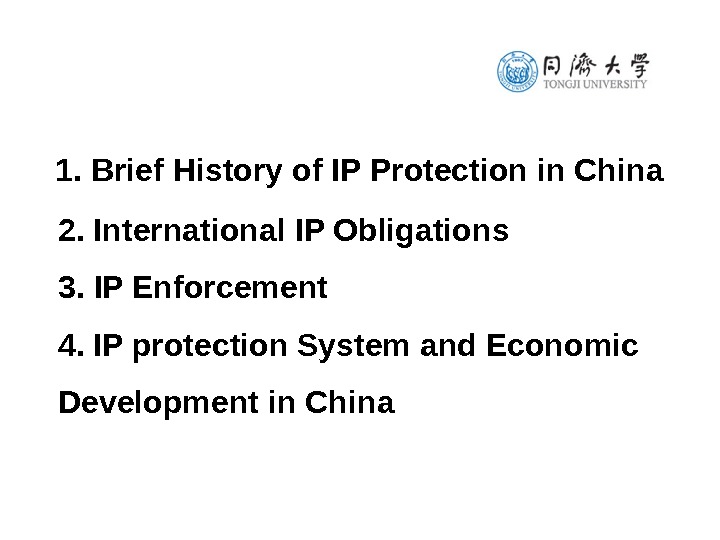
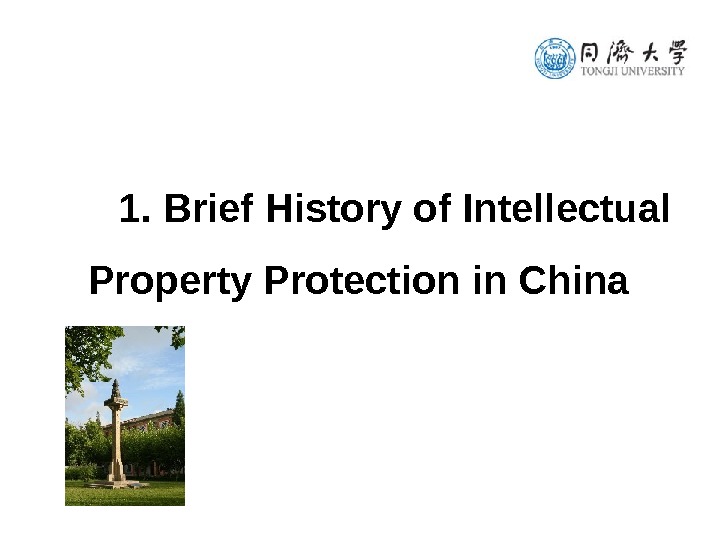
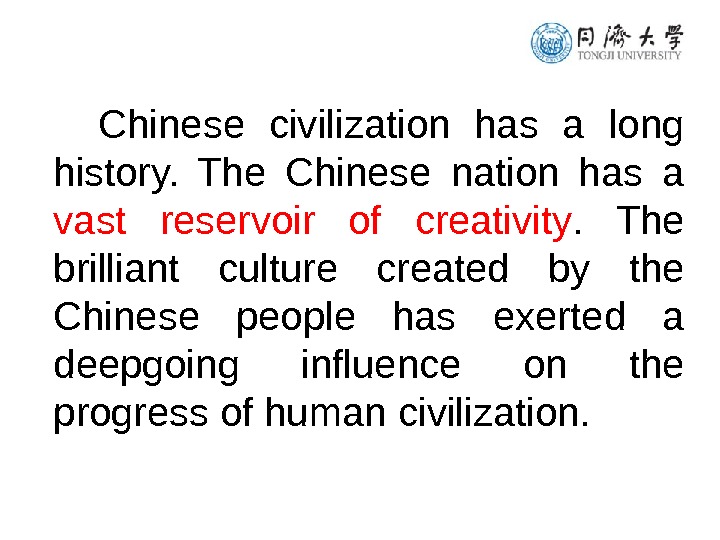
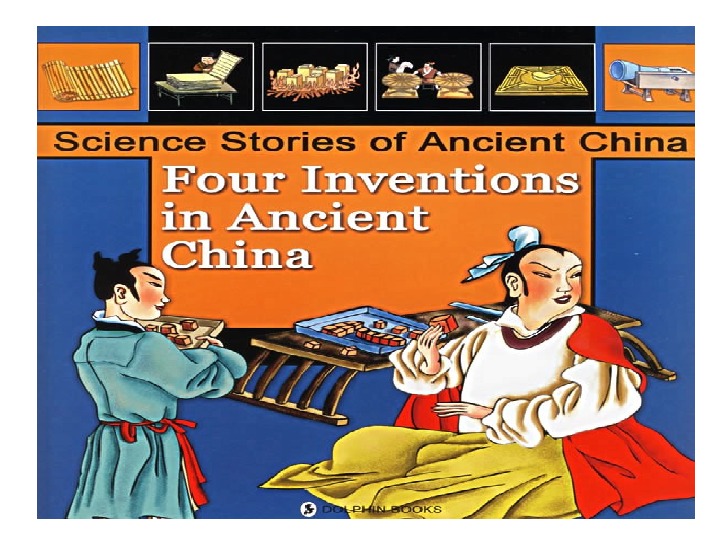
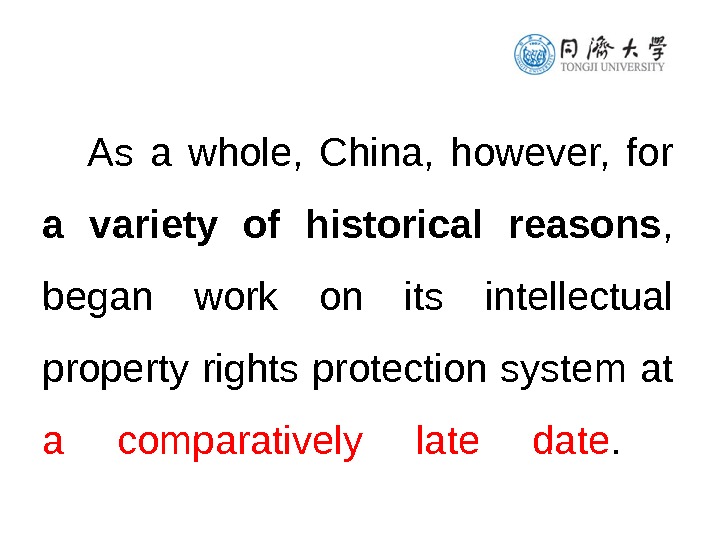
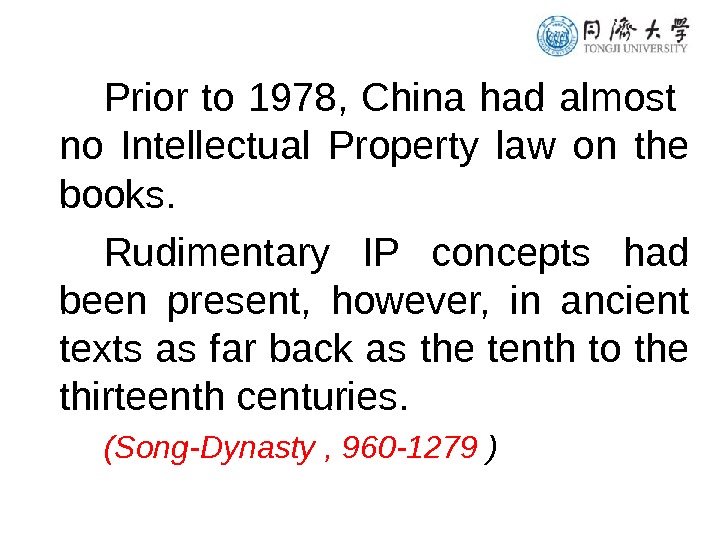
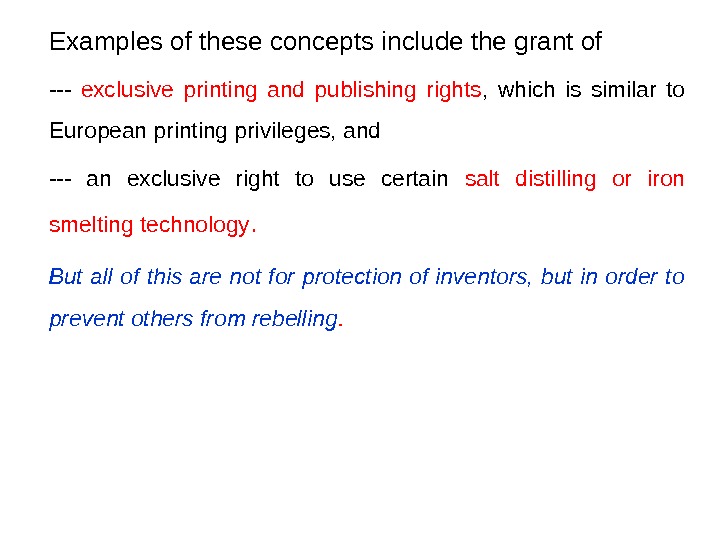


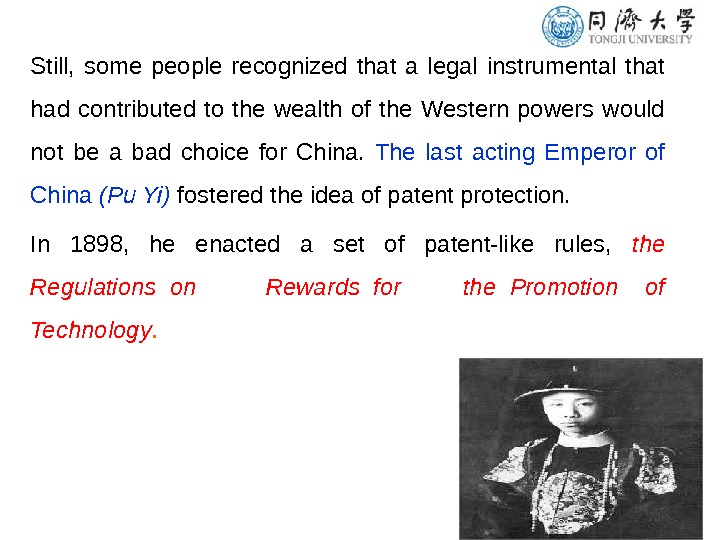
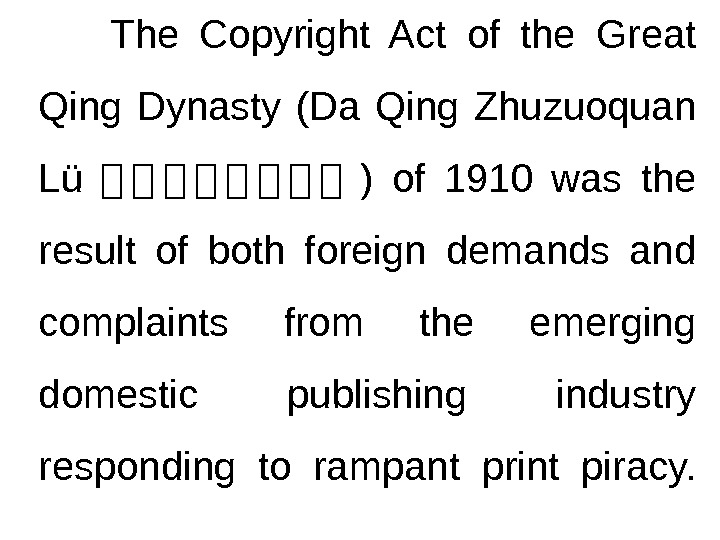
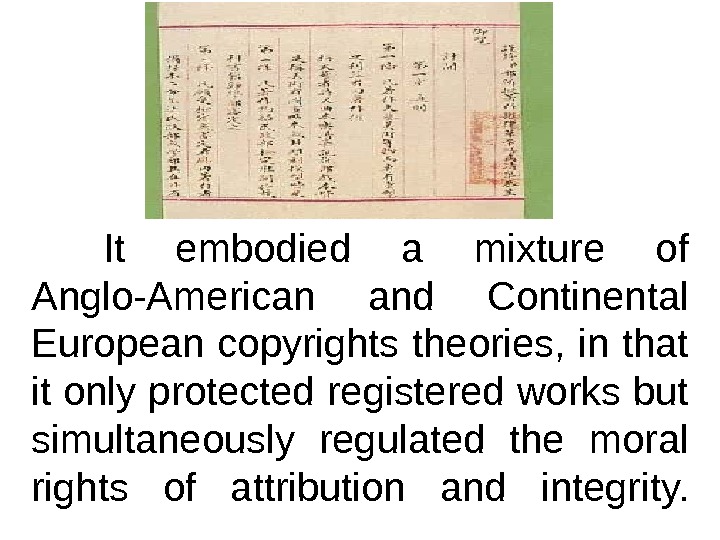
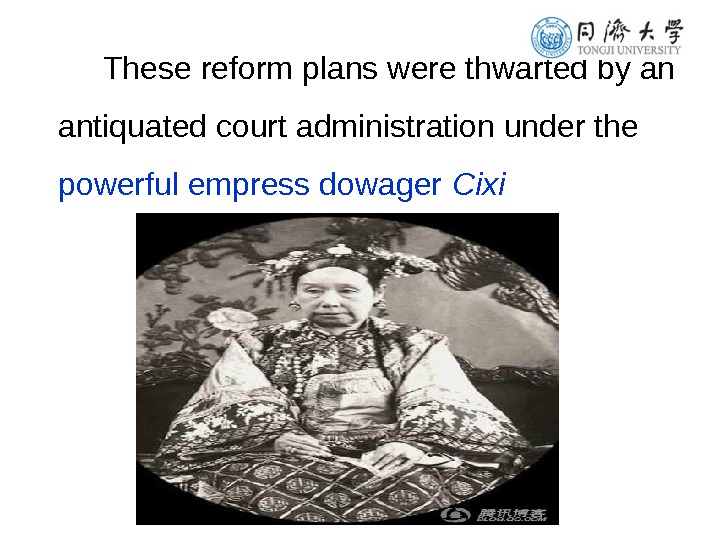
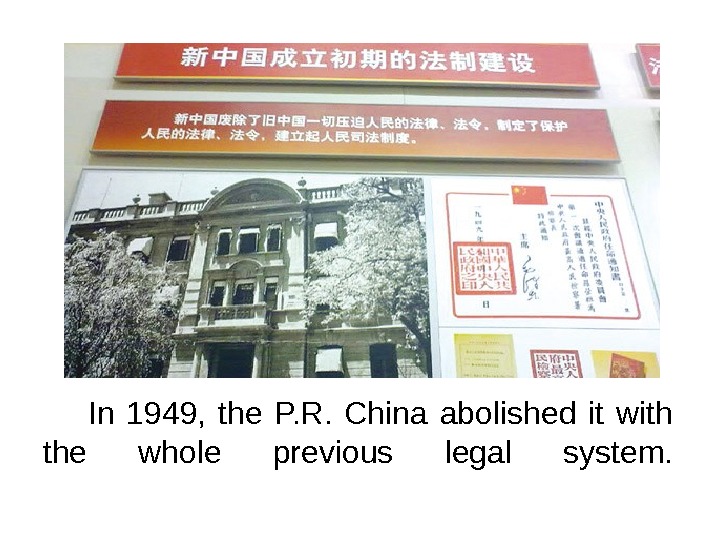

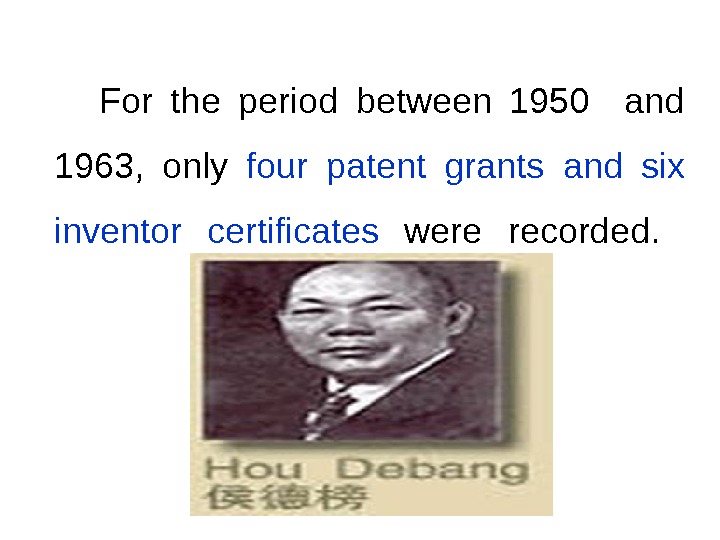
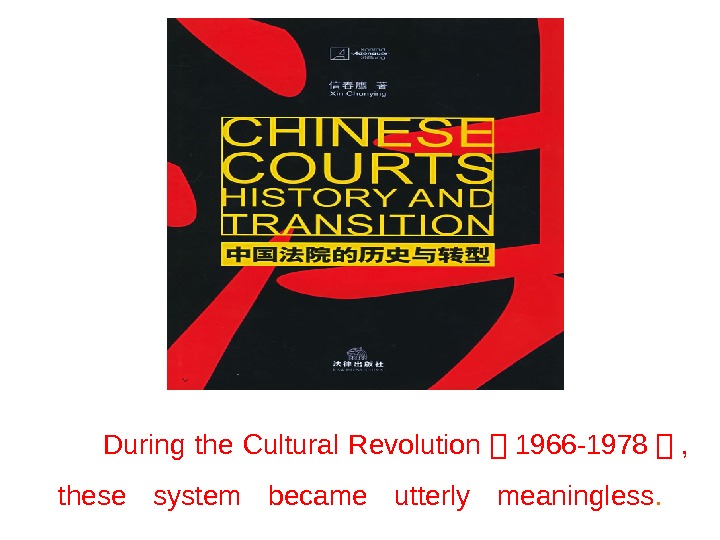
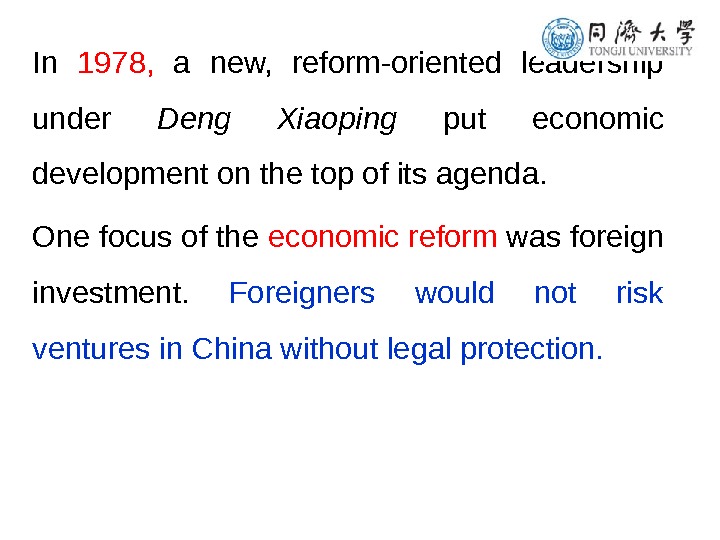
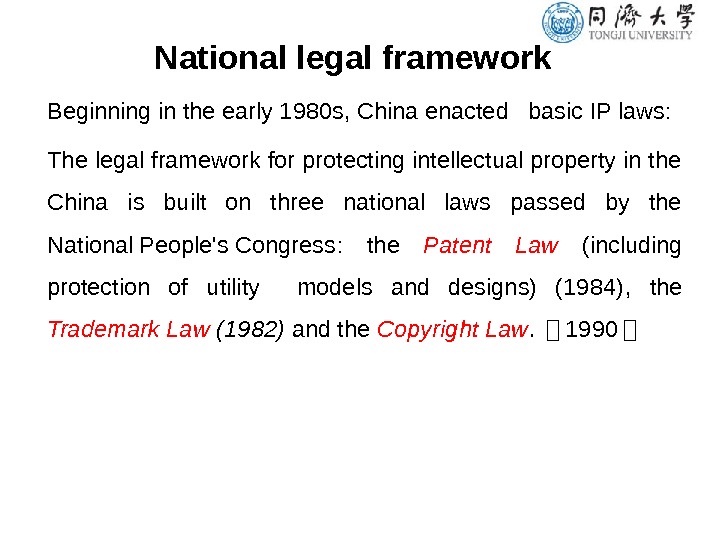
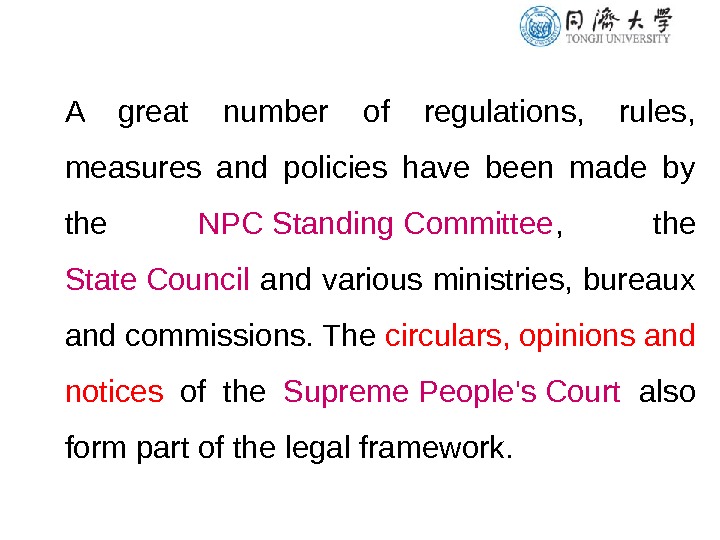
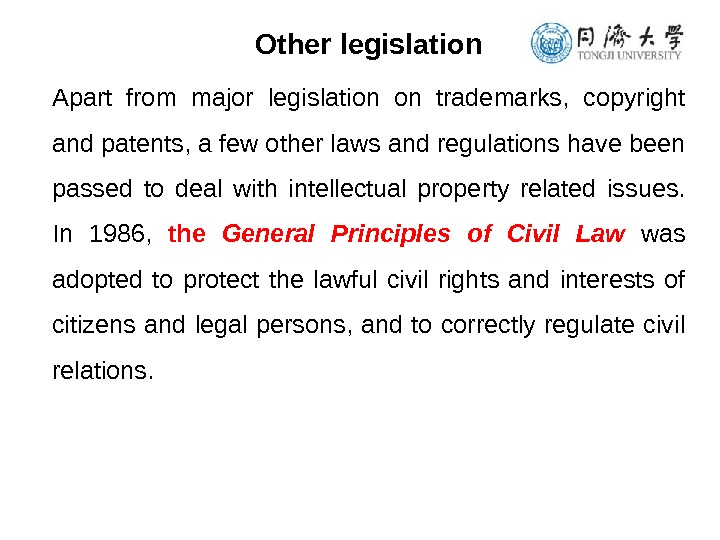
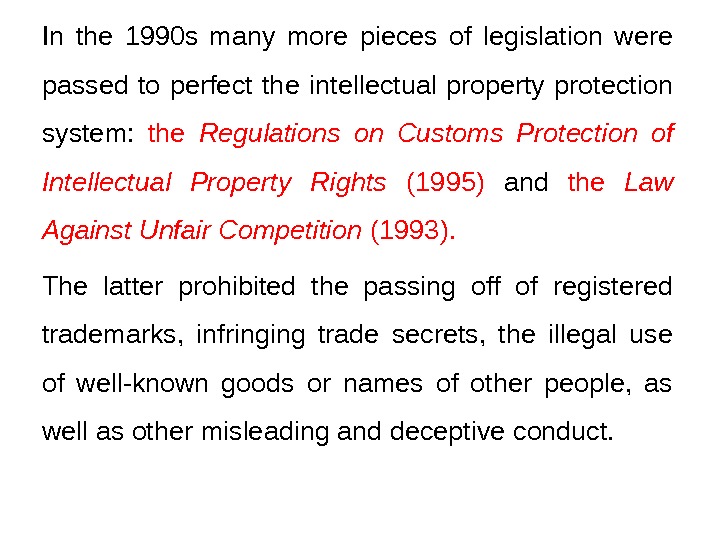
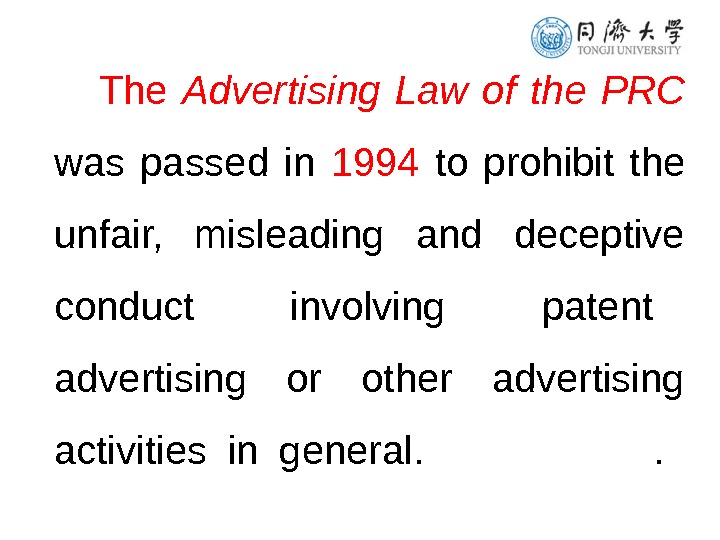
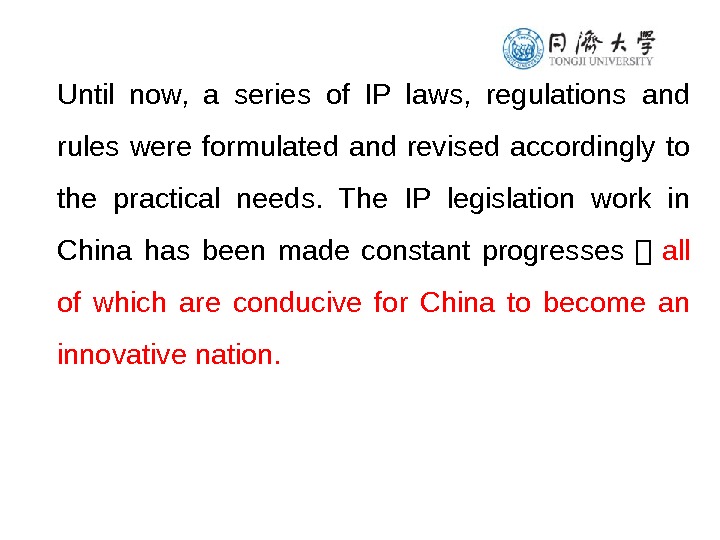
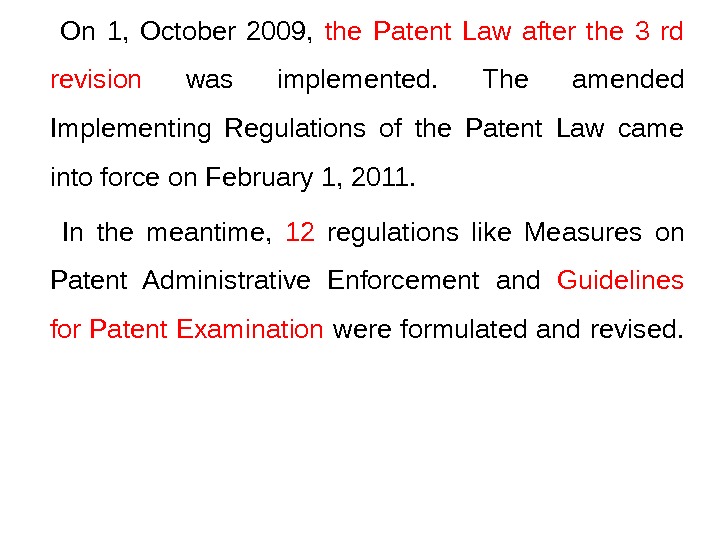

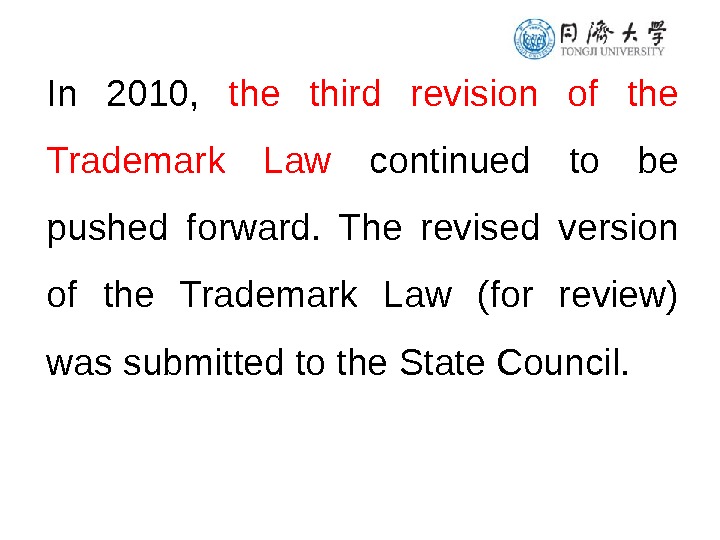
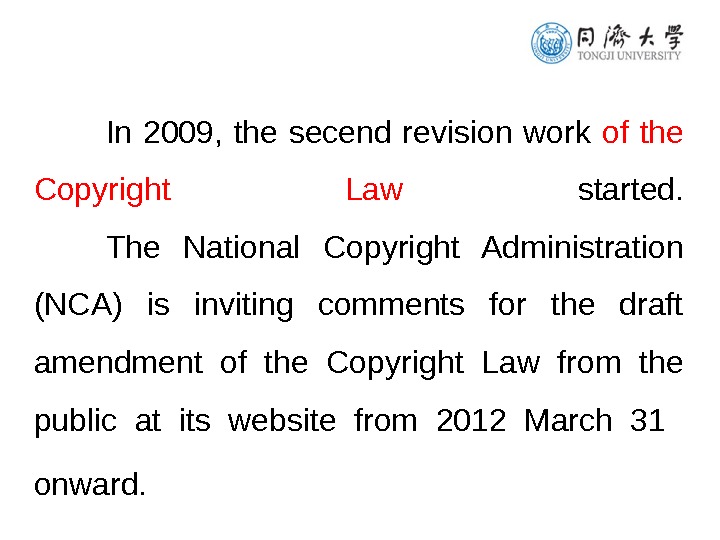
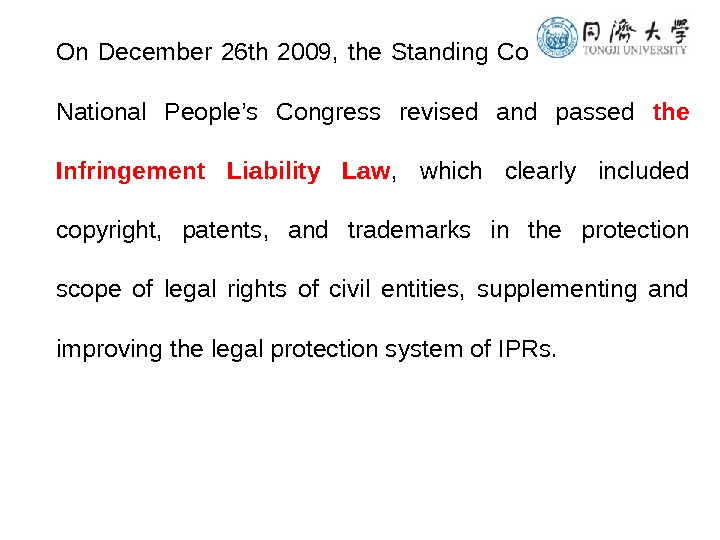
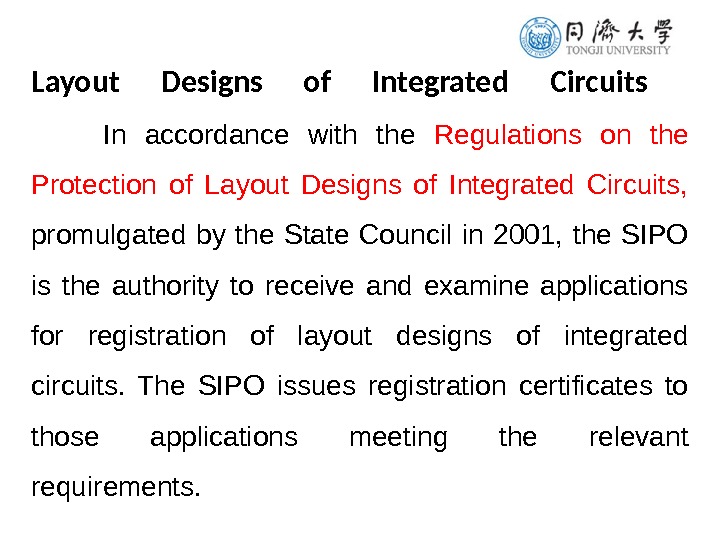
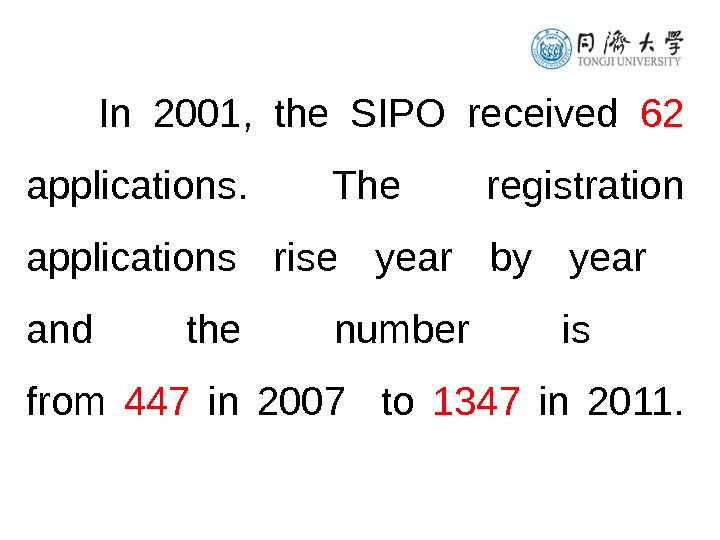
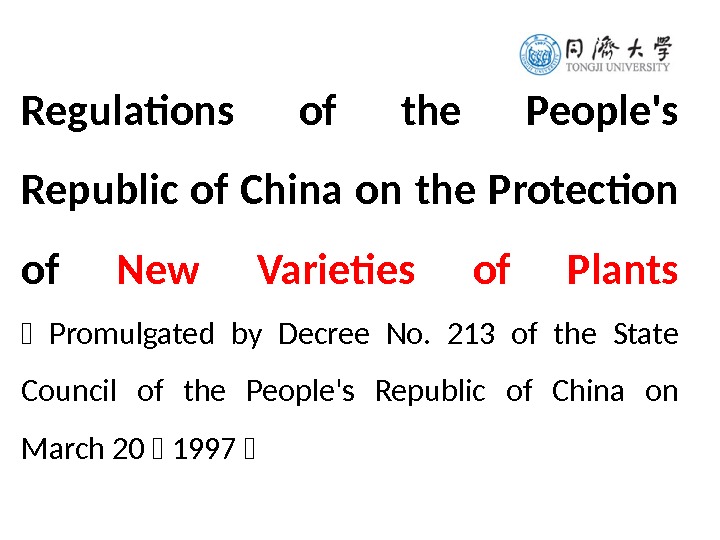
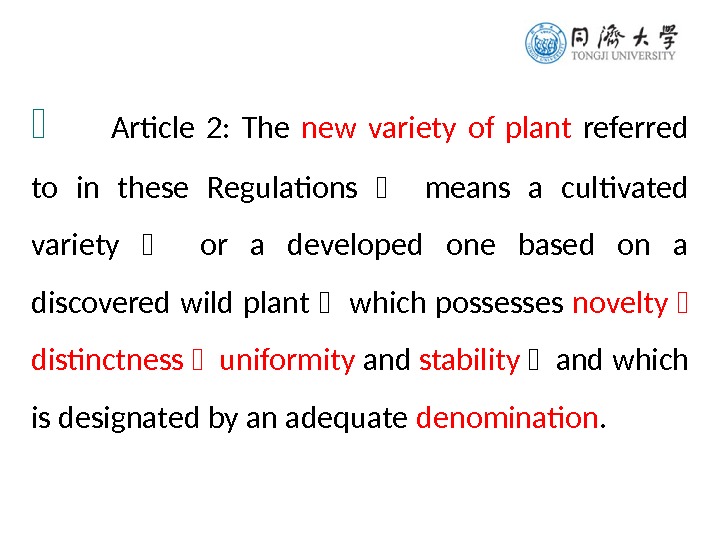
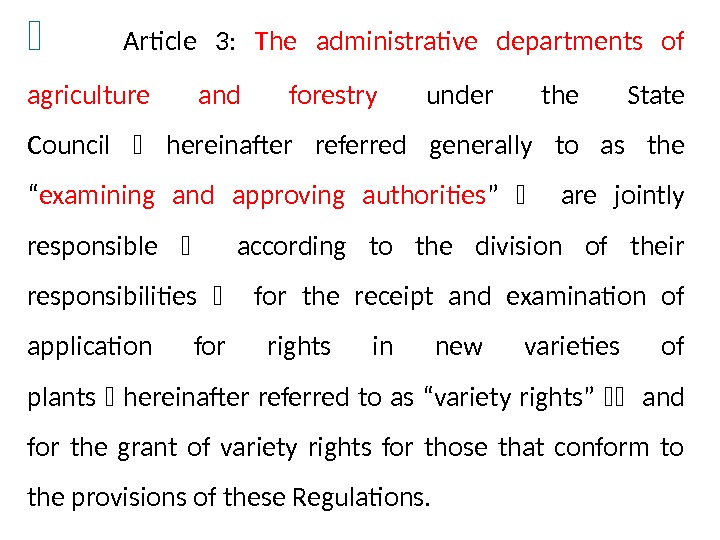
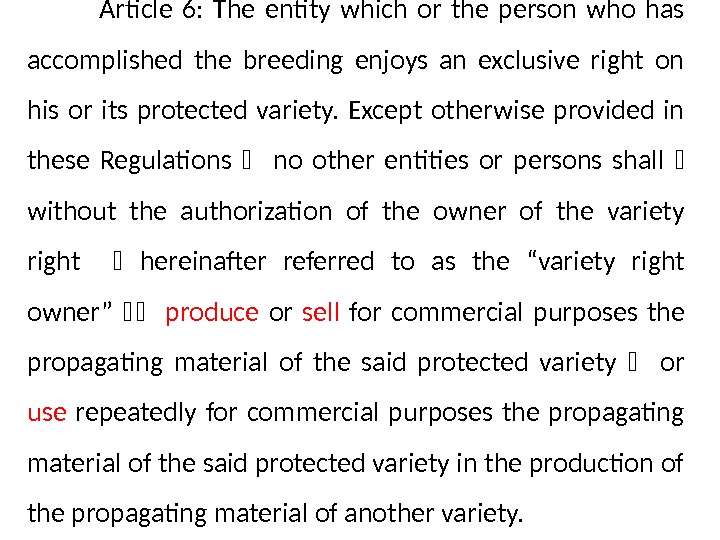
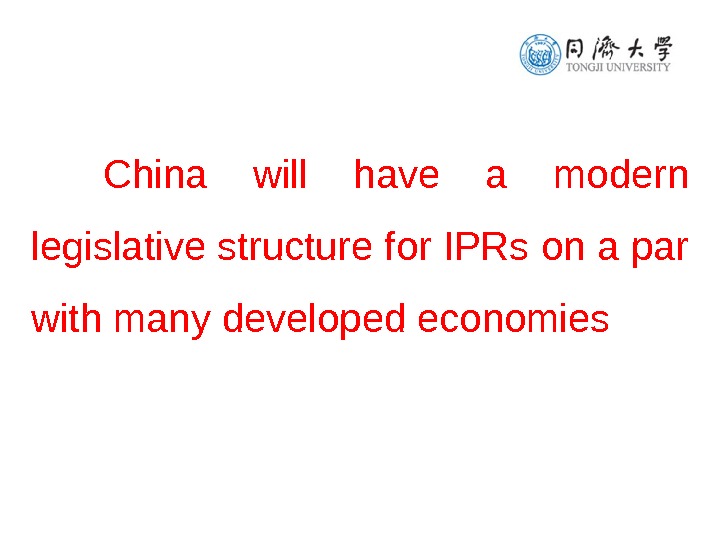
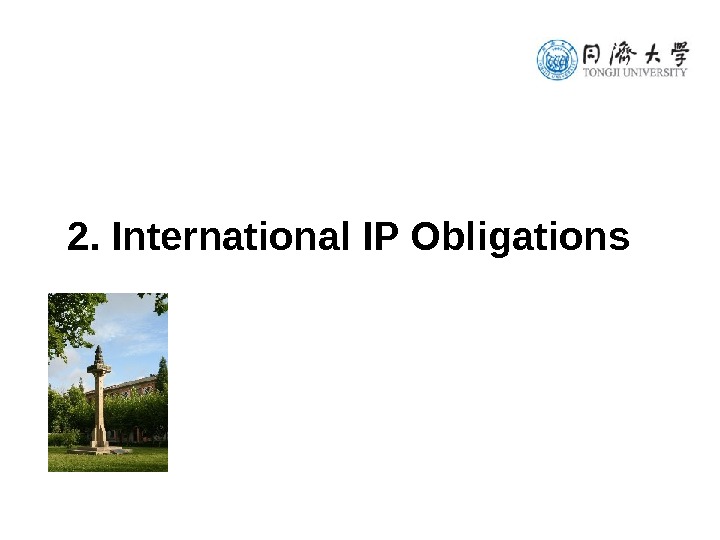
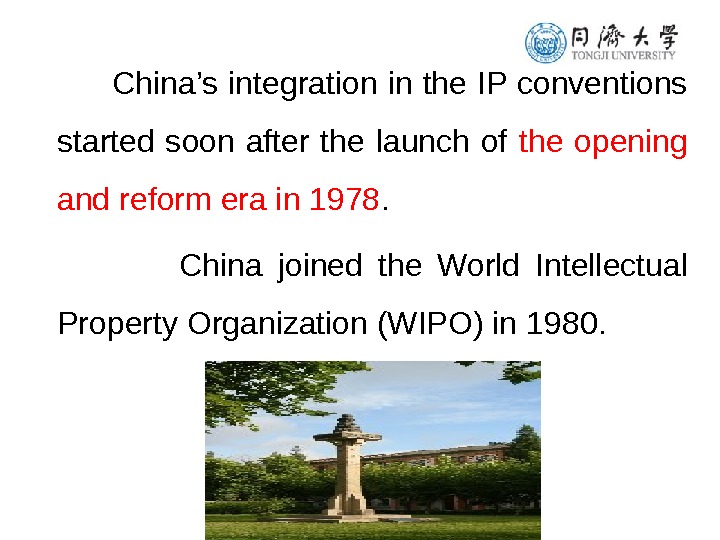



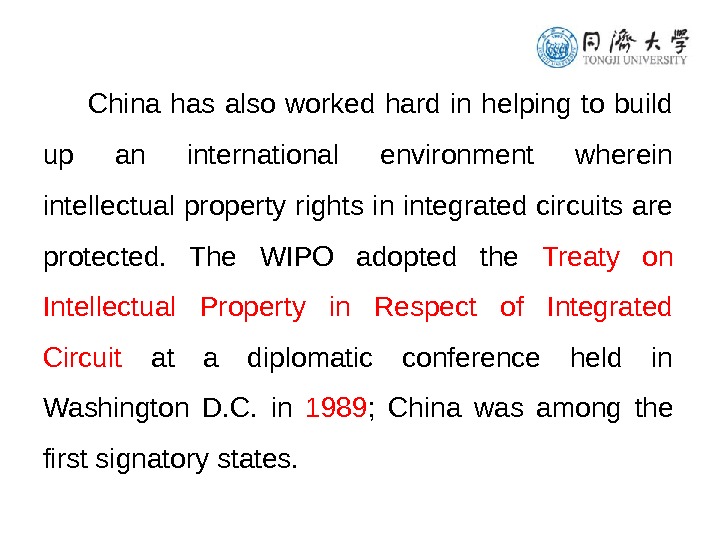
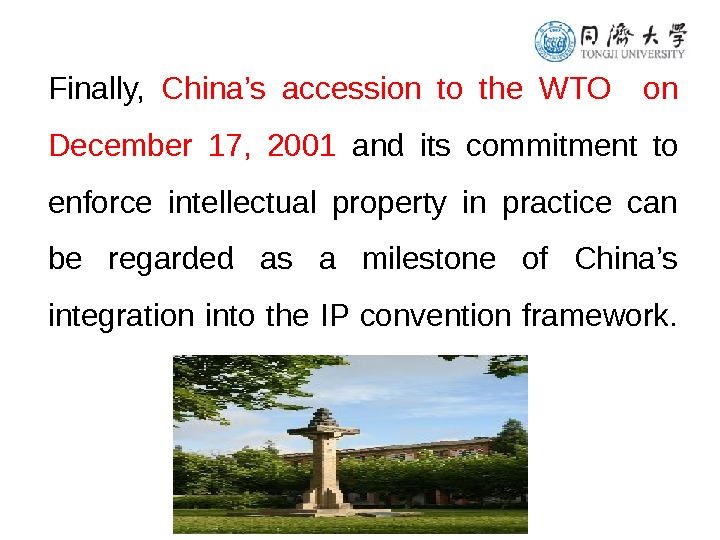

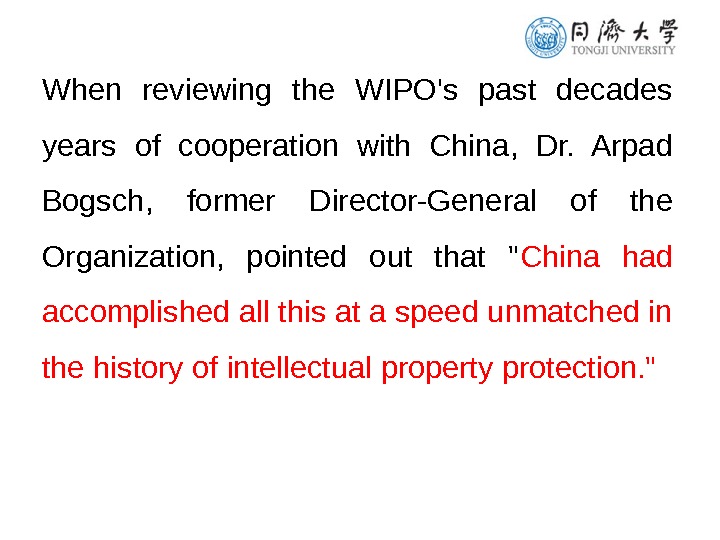
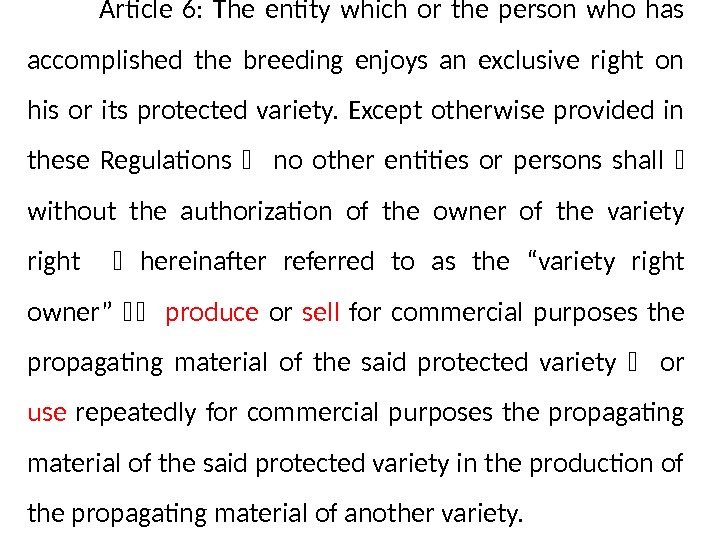
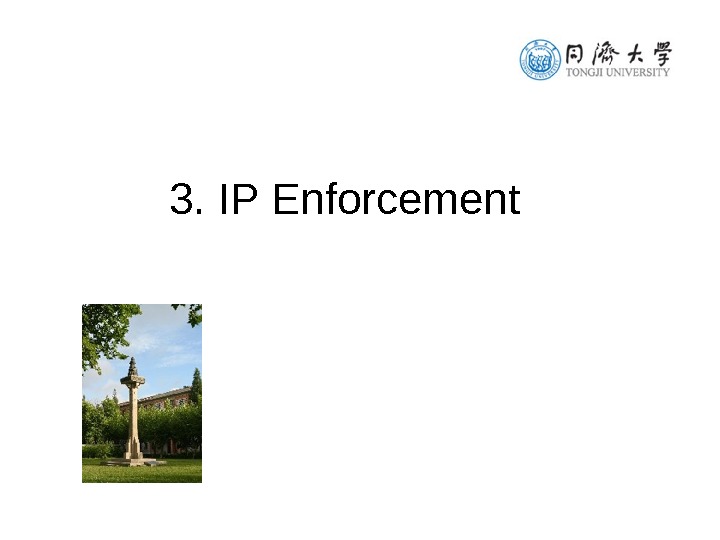
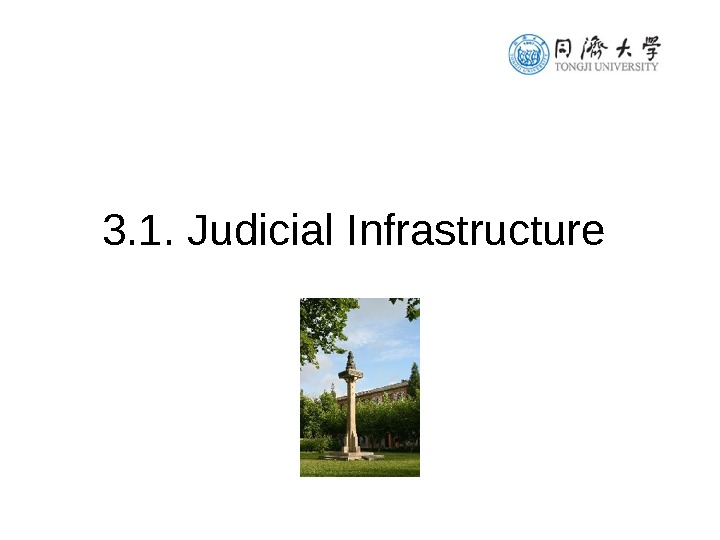

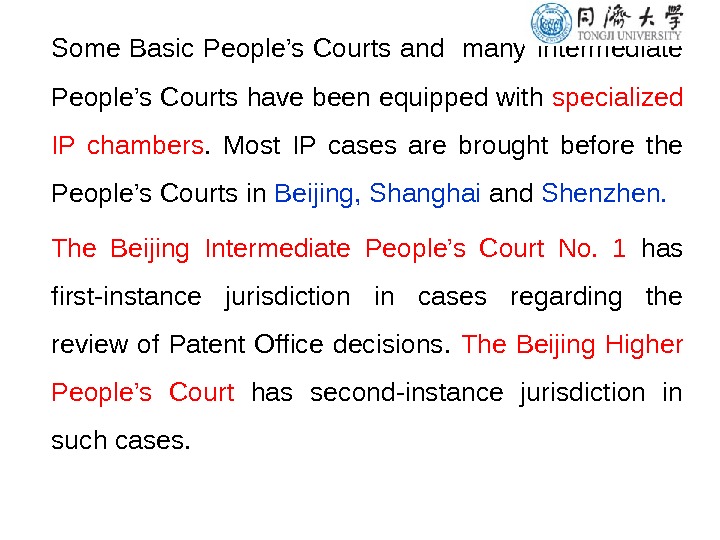

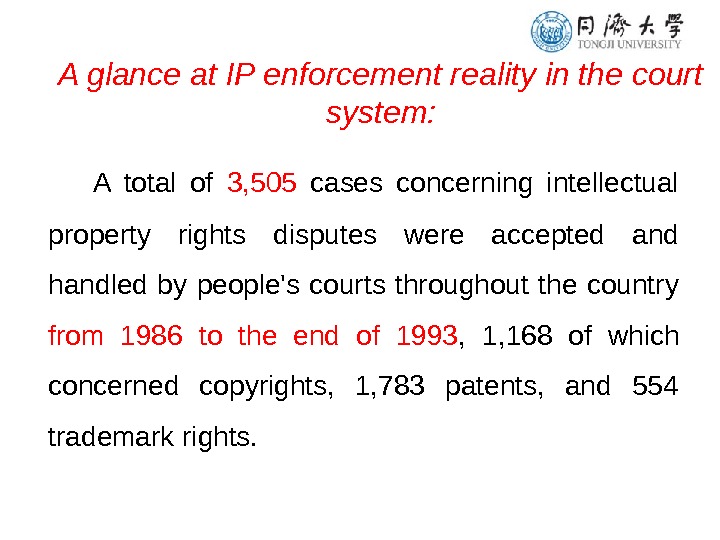

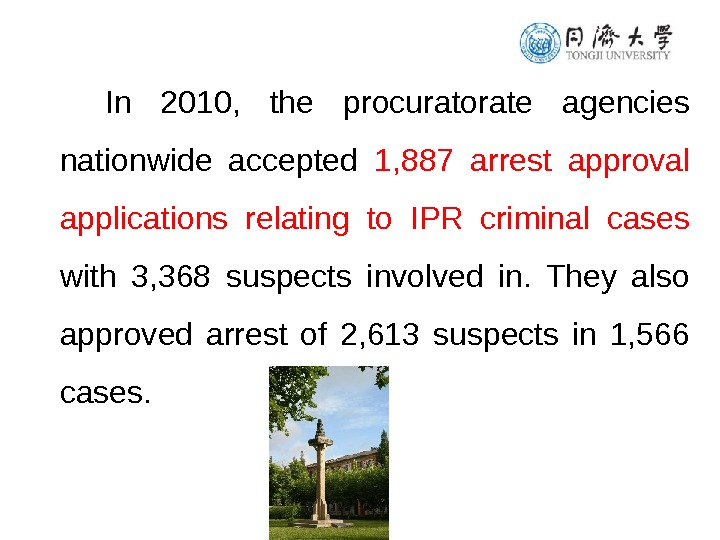
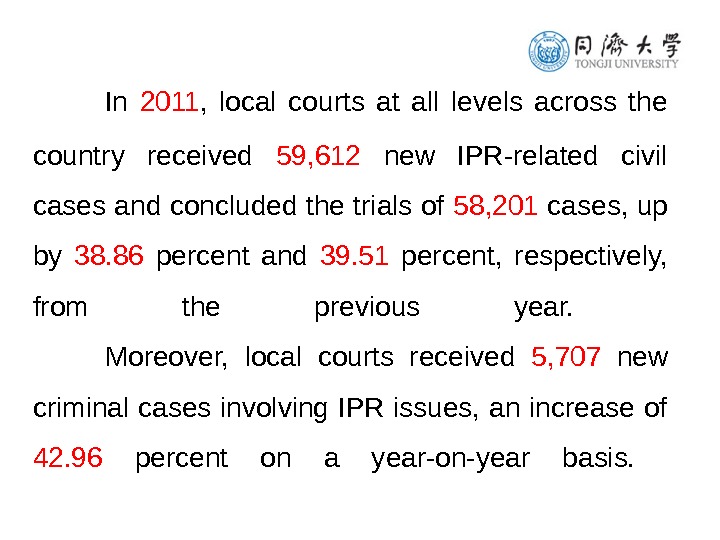

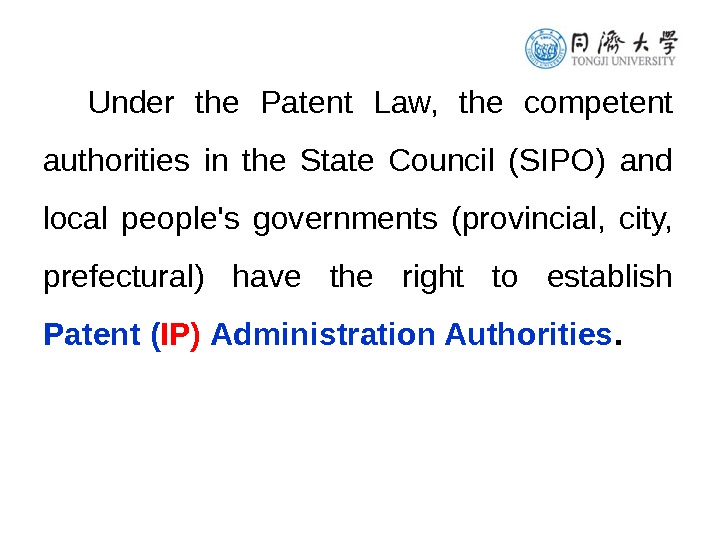
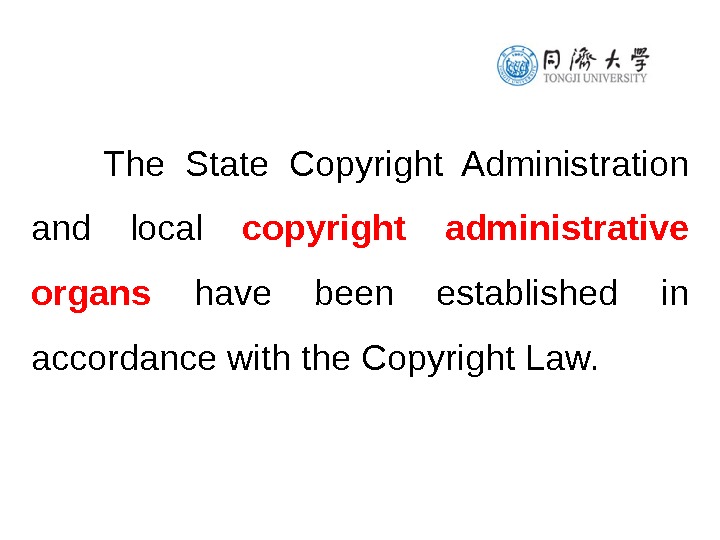
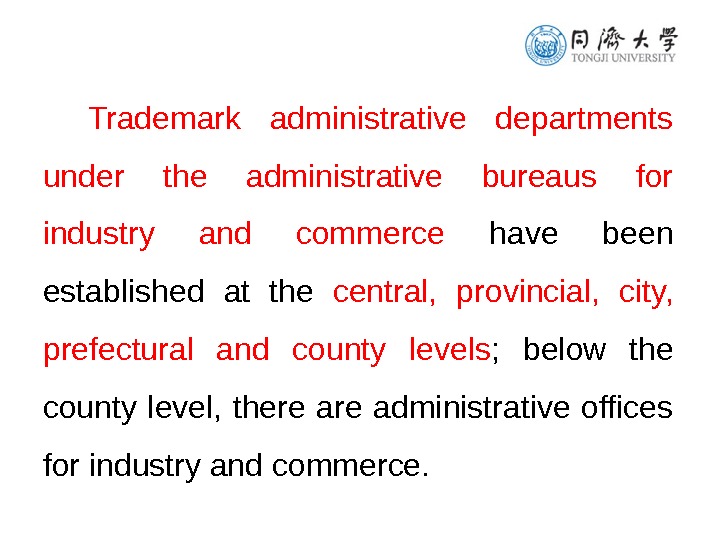

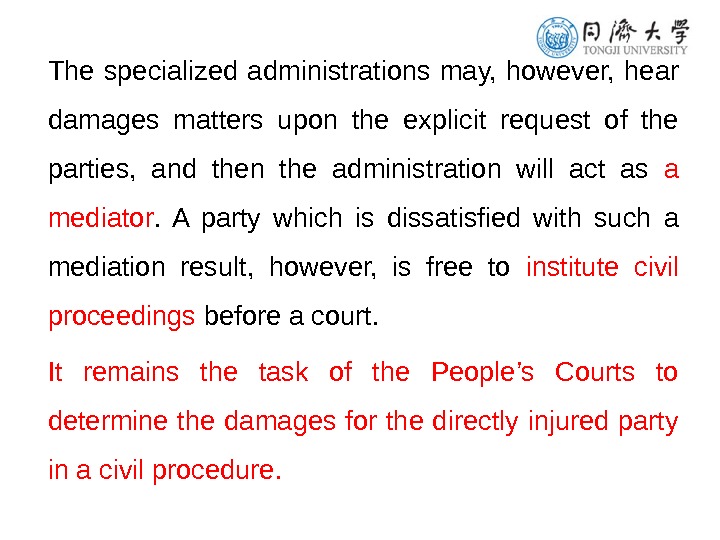
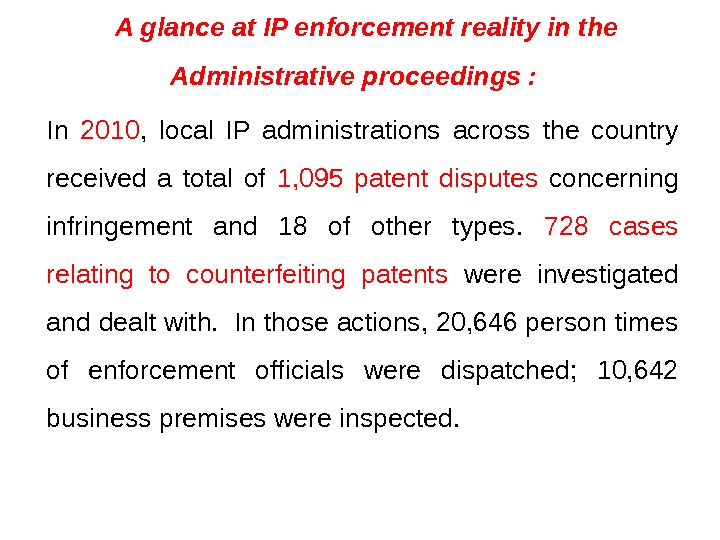
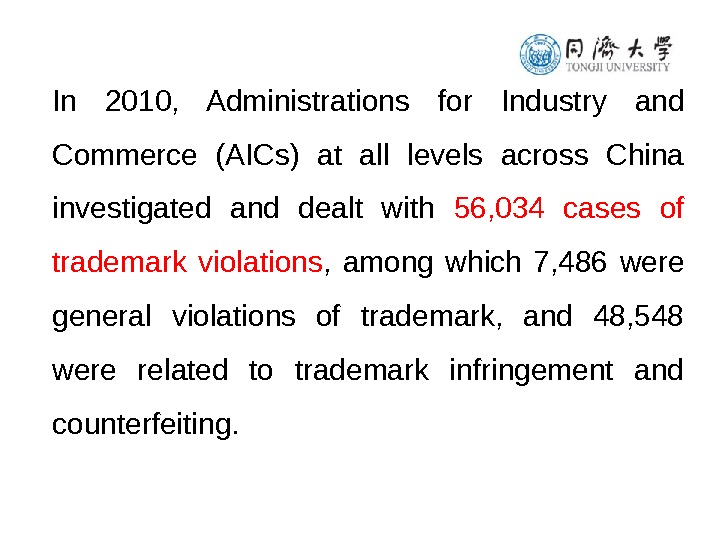
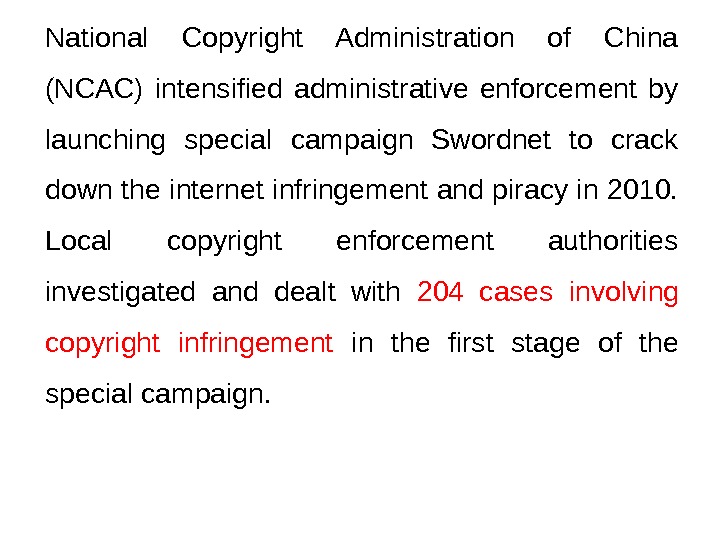

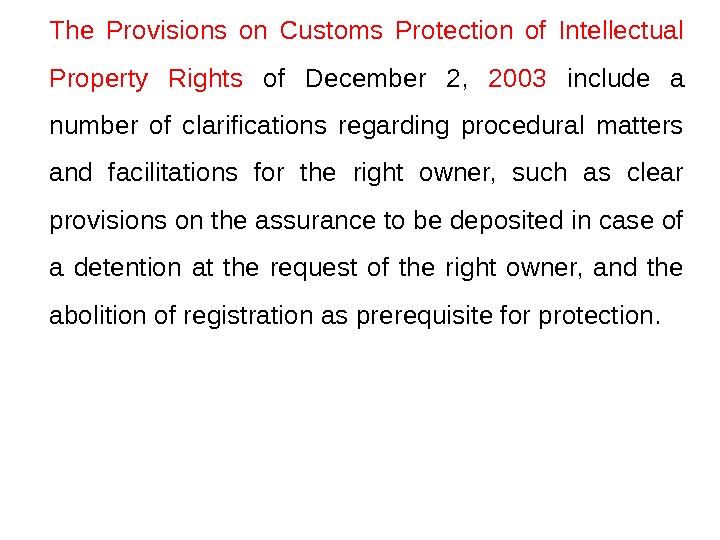
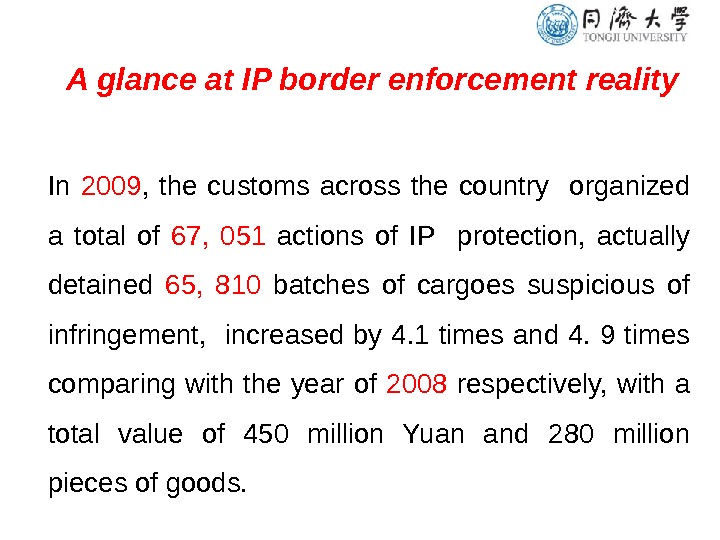
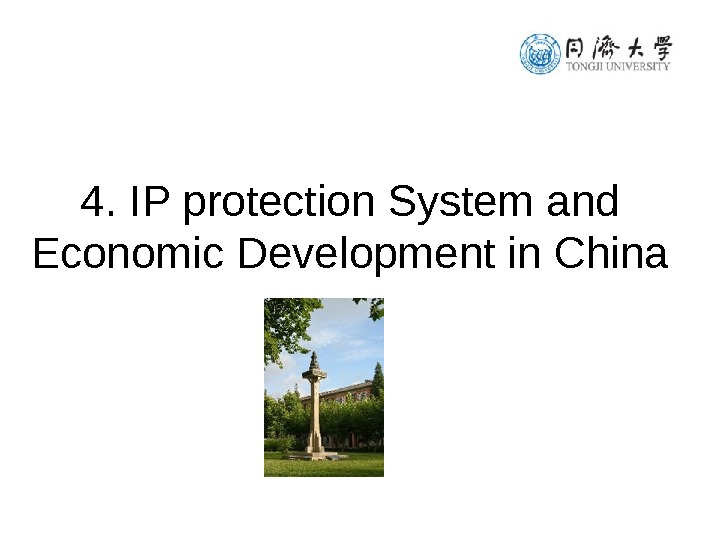
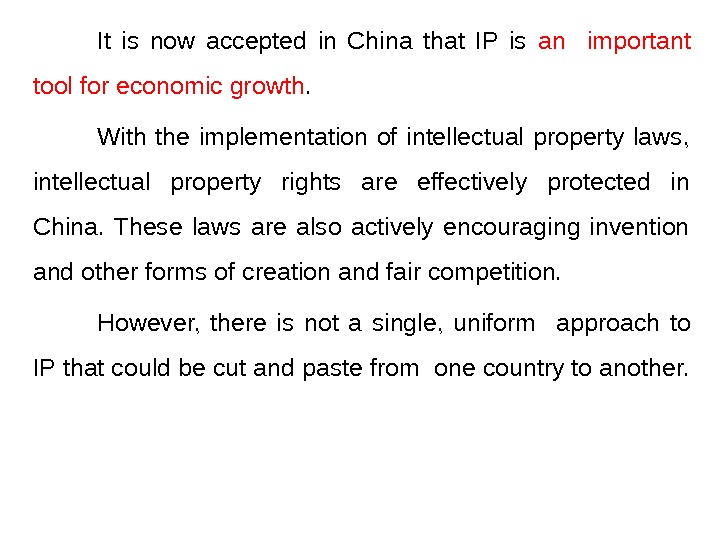
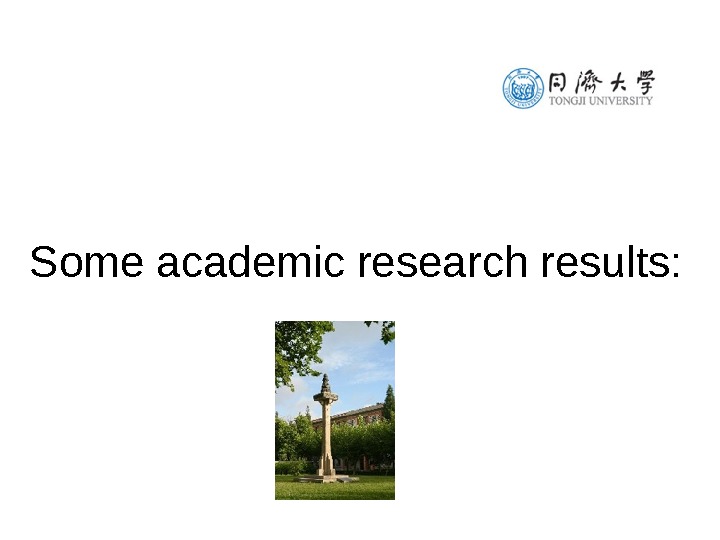

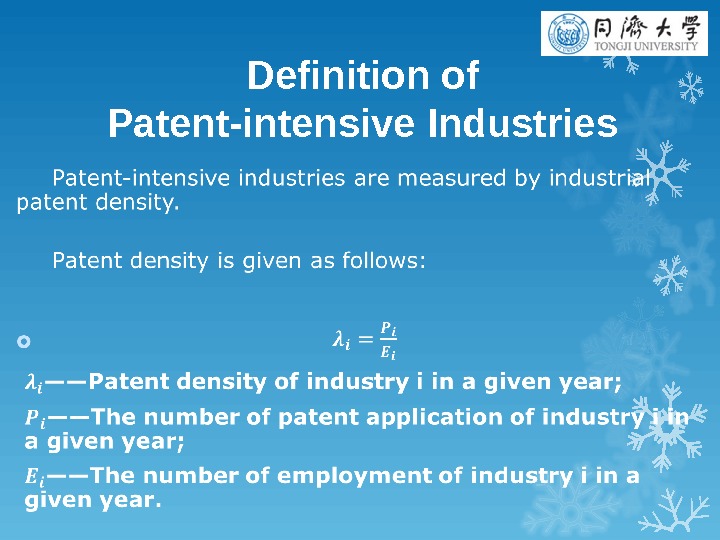
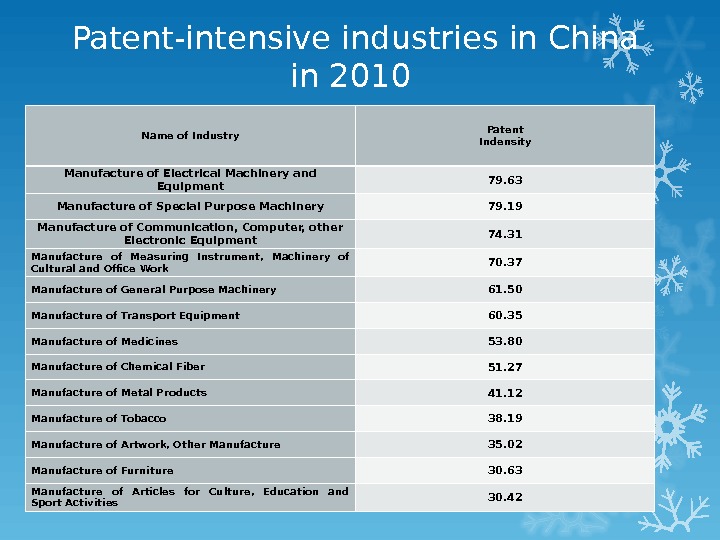

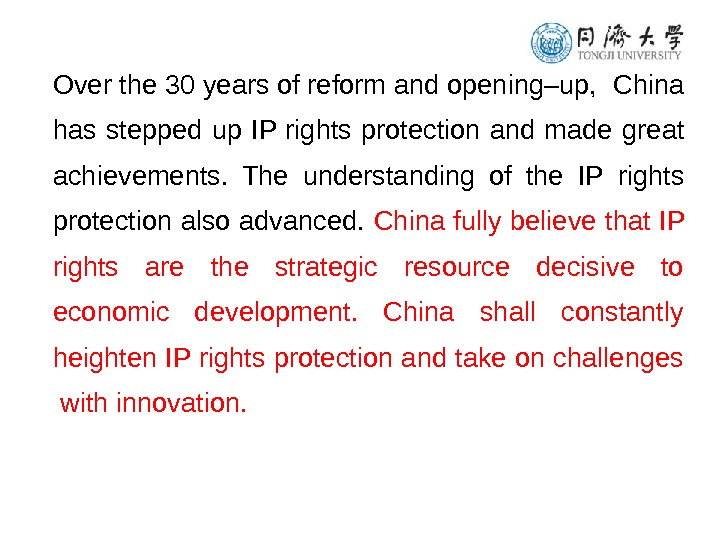
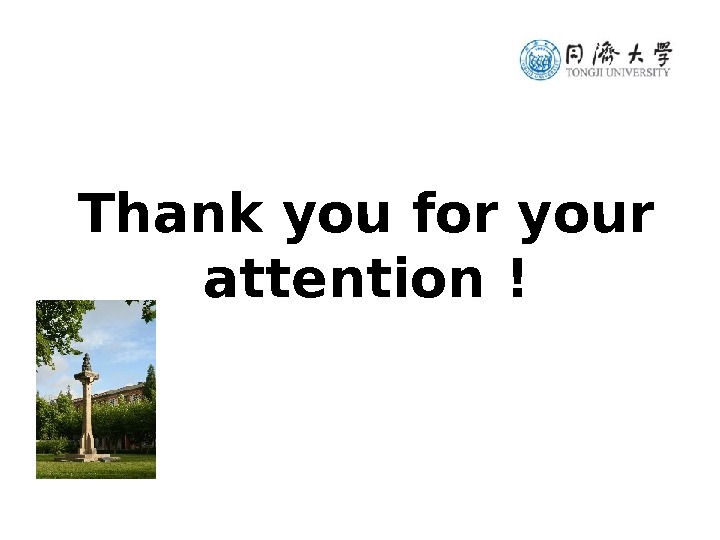
ip_in_china_patent_examiner_2012_print.ppt
- Размер: 7.8 Mегабайта
- Количество слайдов: 77
Описание презентации Brief History and Legal Infrastructure of Intellectual Property по слайдам
 Brief History and Legal Infrastructure of Intellectual Property Protection in China Prof. Dr. Shan, Xiaoguang Email: shanxg 61@yahoo. com. cn Intellectual Property Institute Law School Tongji University
Brief History and Legal Infrastructure of Intellectual Property Protection in China Prof. Dr. Shan, Xiaoguang Email: shanxg 61@yahoo. com. cn Intellectual Property Institute Law School Tongji University
 1. Brief History of IP Protection in China 2. International IP Obligations 3. IP Enforcement 4. IP protection System and Economic Development in China
1. Brief History of IP Protection in China 2. International IP Obligations 3. IP Enforcement 4. IP protection System and Economic Development in China
 1. Brief History of Intellectual Property Protection in China
1. Brief History of Intellectual Property Protection in China
 Chinese civilization has a long history. The Chinese nation has a vast reservoir of creativity. The brilliant culture created by the Chinese people has exerted a deepgoing influence on the progress of human civilization.
Chinese civilization has a long history. The Chinese nation has a vast reservoir of creativity. The brilliant culture created by the Chinese people has exerted a deepgoing influence on the progress of human civilization.

 As a whole, China, however, for a variety of historical reasons , began work on its intellectual property rights protection system at a comparatively late date.
As a whole, China, however, for a variety of historical reasons , began work on its intellectual property rights protection system at a comparatively late date.
 Prior to 1978, China had almost no Intellectual Property law on the books. Rudimentary IP concepts had been present, however, in ancient texts as far back as the tenth to the thirteenth centuries. (Song-Dynasty , 960 -1279 )
Prior to 1978, China had almost no Intellectual Property law on the books. Rudimentary IP concepts had been present, however, in ancient texts as far back as the tenth to the thirteenth centuries. (Song-Dynasty , 960 -1279 )
 Examples of these concepts include the grant of — exclusive printing and publishing rights , which is similar to European printing privileges, and — an exclusive right to use certain salt distilling or iron smelting technology. But all of this are not for protection of inventors, but in order to prevent others from rebelling.
Examples of these concepts include the grant of — exclusive printing and publishing rights , which is similar to European printing privileges, and — an exclusive right to use certain salt distilling or iron smelting technology. But all of this are not for protection of inventors, but in order to prevent others from rebelling.
 A real privilege system was never developed , as the grant of such exclusive exploitation rights depended on the goodwill of the local authorities.
A real privilege system was never developed , as the grant of such exclusive exploitation rights depended on the goodwill of the local authorities.
 China’s first encounter with the Western concept of IP did not occur until the turn of the nineteenth century and was anything but heartening.
China’s first encounter with the Western concept of IP did not occur until the turn of the nineteenth century and was anything but heartening.
 Still, some people recognized that a legal instrumental that had contributed to the wealth of the Western powers would not be a bad choice for China. The last acting Emperor of China (Pu Yi) fostered the idea of patent protection. In 1898, he enacted a set of patent-like rules, the Regulations on Rewards for the Promotion of Technology.
Still, some people recognized that a legal instrumental that had contributed to the wealth of the Western powers would not be a bad choice for China. The last acting Emperor of China (Pu Yi) fostered the idea of patent protection. In 1898, he enacted a set of patent-like rules, the Regulations on Rewards for the Promotion of Technology.
 The Copyright Act of the Great Qing Dynasty (Da Qing Zhuzuoquan Lü 《 《 《 《 ) of 1910 was the result of both foreign demands and complaints from the emerging domestic publishing industry responding to rampant print piracy.
The Copyright Act of the Great Qing Dynasty (Da Qing Zhuzuoquan Lü 《 《 《 《 ) of 1910 was the result of both foreign demands and complaints from the emerging domestic publishing industry responding to rampant print piracy.
 It embodied a mixture of Anglo-American and Continental European copyrights theories, in that it only protected registered works but simultaneously regulated the moral rights of attribution and integrity.
It embodied a mixture of Anglo-American and Continental European copyrights theories, in that it only protected registered works but simultaneously regulated the moral rights of attribution and integrity.
 These reform plans were thwarted by an antiquated court administration under the powerful empress dowager Cixi
These reform plans were thwarted by an antiquated court administration under the powerful empress dowager Cixi
 In 1949, the P. R. China abolished it with the whole previous legal system.
In 1949, the P. R. China abolished it with the whole previous legal system.
 In the early years of P. R. China, after 1949, the government attempted to establish author’s remuneration system and dual system of inventor’s certificates for patent property (like in the former Soviet Union) , but the systems were hardly applied in practice.
In the early years of P. R. China, after 1949, the government attempted to establish author’s remuneration system and dual system of inventor’s certificates for patent property (like in the former Soviet Union) , but the systems were hardly applied in practice.
 For the period between 1950 and 1963, only four patent grants and six inventor certificates were recorded.
For the period between 1950 and 1963, only four patent grants and six inventor certificates were recorded.
 During the Cultural Revolution 《 1966 -1978 《 , these system became utterly meaningless.
During the Cultural Revolution 《 1966 -1978 《 , these system became utterly meaningless.
 In 1978, a new, reform-oriented leadership under Deng Xiaoping put economic development on the top of its agenda. One focus of the economic reform was foreign investment. Foreigners would not risk ventures in China without legal protection.
In 1978, a new, reform-oriented leadership under Deng Xiaoping put economic development on the top of its agenda. One focus of the economic reform was foreign investment. Foreigners would not risk ventures in China without legal protection.
 National legal framework Beginning in the early 1980 s, China enacted basic IP laws: The legal framework for protecting intellectual property in the C hina is built on three national laws passed by the National People’s Congress : the Patent Law (including protection of utility models and designs) (1984) , the Trademark Law (1982) and the Copyright Law. 《 1990 《
National legal framework Beginning in the early 1980 s, China enacted basic IP laws: The legal framework for protecting intellectual property in the C hina is built on three national laws passed by the National People’s Congress : the Patent Law (including protection of utility models and designs) (1984) , the Trademark Law (1982) and the Copyright Law. 《 1990 《
 A great number of regulations, rules, measures and policies have been made by the NPC Standing Committee , the State Council and various ministries, bureaux and commissions. The circulars, opinions and notices of the Supreme People’s Court also form part of the legal framework.
A great number of regulations, rules, measures and policies have been made by the NPC Standing Committee , the State Council and various ministries, bureaux and commissions. The circulars, opinions and notices of the Supreme People’s Court also form part of the legal framework.
 Other legislation Apart from major legislation on trademarks, copyright and patents, a few other laws and regulations have been passed to deal with intellectual property related issues. In 1986, the General Principles of Civil Law was adopted to protect the lawful civil rights and interests of citizens and legal persons, and to correctly regulate civil relations.
Other legislation Apart from major legislation on trademarks, copyright and patents, a few other laws and regulations have been passed to deal with intellectual property related issues. In 1986, the General Principles of Civil Law was adopted to protect the lawful civil rights and interests of citizens and legal persons, and to correctly regulate civil relations.
 In the 1990 s many more pieces of legislation were passed to perfect the intellectual property protection system : the Regulations on Customs Protection of Intellectual Property Rights (1995) and the Law Against Unfair Competition (1993). The latter prohibited the passing off of registered trademarks, infringing trade secrets, the illegal use of well-known goods or names of other people, as well as other misleading and deceptive conduct.
In the 1990 s many more pieces of legislation were passed to perfect the intellectual property protection system : the Regulations on Customs Protection of Intellectual Property Rights (1995) and the Law Against Unfair Competition (1993). The latter prohibited the passing off of registered trademarks, infringing trade secrets, the illegal use of well-known goods or names of other people, as well as other misleading and deceptive conduct.
 The Advertising Law of the PRC was passed in 1994 to prohibit the unfair, misleading and deceptive conduct involving patent advertising or other advertising activities in general. .
The Advertising Law of the PRC was passed in 1994 to prohibit the unfair, misleading and deceptive conduct involving patent advertising or other advertising activities in general. .
 Until now, a series of IP laws, regulations and rules were formulated and revised accordingly to the practical needs. The IP legislation work in China has been made constant progresses 《 all of which are conducive for China to become an innovative nation.
Until now, a series of IP laws, regulations and rules were formulated and revised accordingly to the practical needs. The IP legislation work in China has been made constant progresses 《 all of which are conducive for China to become an innovative nation.
 On 1, October 2009, the Patent Law after the 3 rd revision was implemented. The amended Implementing Regulations of the Patent Law came into force on February 1, 2011. In the meantime, 12 regulations like Measures on Patent Administrative Enforcement and Guidelines for Patent Examination were formulated and revised.
On 1, October 2009, the Patent Law after the 3 rd revision was implemented. The amended Implementing Regulations of the Patent Law came into force on February 1, 2011. In the meantime, 12 regulations like Measures on Patent Administrative Enforcement and Guidelines for Patent Examination were formulated and revised.
 China starts the forth amendment of the Patent Law from the end of 2011. Compared with the former three amendments, this one is well-targeted with strengthening patent protection and intensifying law enforcement as its aim. The event has been incorporat-ed in the legislative plan of the State Council in 2012.
China starts the forth amendment of the Patent Law from the end of 2011. Compared with the former three amendments, this one is well-targeted with strengthening patent protection and intensifying law enforcement as its aim. The event has been incorporat-ed in the legislative plan of the State Council in 2012.
 In 2010, the third revision of the Trademark Law continued to be pushed forward. The revised version of the Trademark Law (for review) was submitted to the State Council.
In 2010, the third revision of the Trademark Law continued to be pushed forward. The revised version of the Trademark Law (for review) was submitted to the State Council.
 In 2009, the secend revision work of the Copyright Law started. The National Copyright Administration (NCA) is inviting comments for the draft amendment of the Copyright Law from the public at its website from 2012 March 31 onward.
In 2009, the secend revision work of the Copyright Law started. The National Copyright Administration (NCA) is inviting comments for the draft amendment of the Copyright Law from the public at its website from 2012 March 31 onward.
 On December 26 th 2009, the Standing Committee of the National People’s Congress revised and passed the Infringement Liability Law , which clearly included copyright, patents, and trademarks in the protection scope of legal rights of civil entities, supplementing and improving the legal protection system of IPRs.
On December 26 th 2009, the Standing Committee of the National People’s Congress revised and passed the Infringement Liability Law , which clearly included copyright, patents, and trademarks in the protection scope of legal rights of civil entities, supplementing and improving the legal protection system of IPRs.
 Layout Designs of Integrated Circuits In accordance with the Regulations on the Protection of Layout Designs of Integrated Circuits, promulgated by the State Council in 2001, the SIPO is the authority to receive and examine applications for registration of layout designs of integrated circuits. The SIPO issues registration certificates to those applications meeting the relevant requirements.
Layout Designs of Integrated Circuits In accordance with the Regulations on the Protection of Layout Designs of Integrated Circuits, promulgated by the State Council in 2001, the SIPO is the authority to receive and examine applications for registration of layout designs of integrated circuits. The SIPO issues registration certificates to those applications meeting the relevant requirements.
 In 2001, the SIPO received 62 applications. The registration applications rise year by year and the number is from 447 in 2007 to 1347 in 2011.
In 2001, the SIPO received 62 applications. The registration applications rise year by year and the number is from 447 in 2007 to 1347 in 2011.
 Regulations of the People’s Republic of China on the Protection of New Varieties of Plants ( Promulgated by Decree No. 213 of the State Council of the People’s Republic of China on March 20 ( 1997 (
Regulations of the People’s Republic of China on the Protection of New Varieties of Plants ( Promulgated by Decree No. 213 of the State Council of the People’s Republic of China on March 20 ( 1997 (
 ( Article 2: The new variety of plant referred to in these Regulations ( means a cultivated variety ( or a developed one based on a discovered wild plant ( which possesses novelty ( distinctness ( uniformity and stability ( and which is designated by an adequate denomination.
( Article 2: The new variety of plant referred to in these Regulations ( means a cultivated variety ( or a developed one based on a discovered wild plant ( which possesses novelty ( distinctness ( uniformity and stability ( and which is designated by an adequate denomination.
 ( Article 3: The administrative departments of agriculture and forestry under the State Council ( hereinafter referred generally to as the “ examining and approving authorities ” ( are jointly responsible ( according to the division of their responsibilities ( for the receipt and examination of application for rights in new varieties of plants ( hereinafter referred to as “variety rights” ( ( and for the grant of variety rights for those that conform to the provisions of these Regulations.
( Article 3: The administrative departments of agriculture and forestry under the State Council ( hereinafter referred generally to as the “ examining and approving authorities ” ( are jointly responsible ( according to the division of their responsibilities ( for the receipt and examination of application for rights in new varieties of plants ( hereinafter referred to as “variety rights” ( ( and for the grant of variety rights for those that conform to the provisions of these Regulations.
 Article 6: The entity which or the person who has accomplished the breeding enjoys an exclusive right on his or its protected variety. Except otherwise provided in these Regulations ( no other entities or persons shall ( without the authorization of the owner of the variety right ( hereinafter referred to as the “variety right owner” ( ( produce or sell for commercial purposes the propagating material of the said protected variety ( or use repeatedly for commercial purposes the propagating material of the said protected variety in the production of the propagating material of another variety.
Article 6: The entity which or the person who has accomplished the breeding enjoys an exclusive right on his or its protected variety. Except otherwise provided in these Regulations ( no other entities or persons shall ( without the authorization of the owner of the variety right ( hereinafter referred to as the “variety right owner” ( ( produce or sell for commercial purposes the propagating material of the said protected variety ( or use repeatedly for commercial purposes the propagating material of the said protected variety in the production of the propagating material of another variety.
 China will have a modern legislative structure for IPRs on a par with many developed economies
China will have a modern legislative structure for IPRs on a par with many developed economies
 2. International IP Obligations
2. International IP Obligations
 China’s integration in the IP conventions started soon after the launch of the opening and reform era in 1978. China joined the World Intellectual Property Organization (WIPO) in 1980.
China’s integration in the IP conventions started soon after the launch of the opening and reform era in 1978. China joined the World Intellectual Property Organization (WIPO) in 1980.
 It was not until the early 1990 s that China actually joined the Berne Conventions and Universal Copyright Convention: China adhered to the Paris Act of the Berne Convention on July 10, 1992. On July 30, 1992, China joined the Universal Copyright and on January 5, 1993, it adhered to the Geneva Convention .
It was not until the early 1990 s that China actually joined the Berne Conventions and Universal Copyright Convention: China adhered to the Paris Act of the Berne Convention on July 10, 1992. On July 30, 1992, China joined the Universal Copyright and on January 5, 1993, it adhered to the Geneva Convention .
 The integration of China in the world copyright community was complete with China’s accession to the World Intellectual Property Organization (WIPO) treaties: The WIPO Copyright Treaty and WIPO Performances and Phonograms Treaty , on March 9, 2007.
The integration of China in the world copyright community was complete with China’s accession to the World Intellectual Property Organization (WIPO) treaties: The WIPO Copyright Treaty and WIPO Performances and Phonograms Treaty , on March 9, 2007.
 Upon joining WIPO on March 3, 1980, China adhered to the Paris Convention on December 19, 1984 , to Madrid Agreement on July 4, 1989 , to the Madrid Protocol on September 1, 1995 , and to the Patent Cooperation Treaty on October 1, 1993. Since April 23, 1999, China has also adhere to the 1978 Act of the international Convention for the Protection of New Varieties of Plants.
Upon joining WIPO on March 3, 1980, China adhered to the Paris Convention on December 19, 1984 , to Madrid Agreement on July 4, 1989 , to the Madrid Protocol on September 1, 1995 , and to the Patent Cooperation Treaty on October 1, 1993. Since April 23, 1999, China has also adhere to the 1978 Act of the international Convention for the Protection of New Varieties of Plants.
 China has also worked hard in helping to build up an international environment wherein intellectual property rights in integrated circuits are protected. The WIPO adopted the Treaty on Intellectual Property in Respect of Integrated Circuit at a diplomatic conference held in Washington D. C. in 1989 ; China was among the first signatory states.
China has also worked hard in helping to build up an international environment wherein intellectual property rights in integrated circuits are protected. The WIPO adopted the Treaty on Intellectual Property in Respect of Integrated Circuit at a diplomatic conference held in Washington D. C. in 1989 ; China was among the first signatory states.
 Finally, China’s accession to the WTO on December 17, 2001 and its commitment to enforce intellectual property in practice can be regarded as a milestone of China’s integration into the IP convention framework.
Finally, China’s accession to the WTO on December 17, 2001 and its commitment to enforce intellectual property in practice can be regarded as a milestone of China’s integration into the IP convention framework.
 Generally, once C hina has acceded to an international treaty, the People’s Courts can quote the provisions of the treaty directly in deciding an intellectual property infringement case, without reference to a Chinese domestic law by which the treaty provision is incorporated.
Generally, once C hina has acceded to an international treaty, the People’s Courts can quote the provisions of the treaty directly in deciding an intellectual property infringement case, without reference to a Chinese domestic law by which the treaty provision is incorporated.
 When reviewing the WIPO’s past decades years of cooperation with China, Dr. Arpad Bogsch, former Director-General of the Organization, pointed out that » China had accomplished all this at a speed unmatched in the history of intellectual property protection. «
When reviewing the WIPO’s past decades years of cooperation with China, Dr. Arpad Bogsch, former Director-General of the Organization, pointed out that » China had accomplished all this at a speed unmatched in the history of intellectual property protection. «
 Article 6: The entity which or the person who has accomplished the breeding enjoys an exclusive right on his or its protected variety. Except otherwise provided in these Regulations ( no other entities or persons shall ( without the authorization of the owner of the variety right ( hereinafter referred to as the “variety right owner” ( ( produce or sell for commercial purposes the propagating material of the said protected variety ( or use repeatedly for commercial purposes the propagating material of the said protected variety in the production of the propagating material of another variety.
Article 6: The entity which or the person who has accomplished the breeding enjoys an exclusive right on his or its protected variety. Except otherwise provided in these Regulations ( no other entities or persons shall ( without the authorization of the owner of the variety right ( hereinafter referred to as the “variety right owner” ( ( produce or sell for commercial purposes the propagating material of the said protected variety ( or use repeatedly for commercial purposes the propagating material of the said protected variety in the production of the propagating material of another variety.
 3. IP Enforcement
3. IP Enforcement
 3. 1. Judicial Infrastructure
3. 1. Judicial Infrastructure
 China’s court hierarchy is composed of — Basic People’s Courts on the country and city level, followed by — the Intermediate People’s Courts on municipal district and prefecture level, and — Higher People’s Courts on the provincial level. The highest judicial authority is — the Supreme People’s Court , which also has some legislative authority (in form of judicial interpretations ).
China’s court hierarchy is composed of — Basic People’s Courts on the country and city level, followed by — the Intermediate People’s Courts on municipal district and prefecture level, and — Higher People’s Courts on the provincial level. The highest judicial authority is — the Supreme People’s Court , which also has some legislative authority (in form of judicial interpretations ).
 Some Basic People’s Courts and many Intermediate People’s Courts have been equipped with specialized IP chambers. Most IP cases are brought before the People’s Courts in Beijing, Shanghai and Shenzhen. The Beijing Intermediate People’s Court No. 1 has first-instance jurisdiction in cases regarding the review of Patent Office decisions. The Beijing Higher People’s Court has second-instance jurisdiction in such cases.
Some Basic People’s Courts and many Intermediate People’s Courts have been equipped with specialized IP chambers. Most IP cases are brought before the People’s Courts in Beijing, Shanghai and Shenzhen. The Beijing Intermediate People’s Court No. 1 has first-instance jurisdiction in cases regarding the review of Patent Office decisions. The Beijing Higher People’s Court has second-instance jurisdiction in such cases.
 With the implementation of China’s law on intellectual property protection and the increasing improvement of the judiciary’s protective power, people’s courts at various levels in China have accepted and decided a large number of civil disputes concerning intellectual property rights.
With the implementation of China’s law on intellectual property protection and the increasing improvement of the judiciary’s protective power, people’s courts at various levels in China have accepted and decided a large number of civil disputes concerning intellectual property rights.
 A glance at IP enforcement reality in the court system: A total of 3, 505 cases concerning intellectual property rights disputes were accepted and handled by people’s courts throughout the country from 1986 to the end of 1993 , 1, 168 of which concerned copyrights, 1, 783 patents, and 554 trademark rights.
A glance at IP enforcement reality in the court system: A total of 3, 505 cases concerning intellectual property rights disputes were accepted and handled by people’s courts throughout the country from 1986 to the end of 1993 , 1, 168 of which concerned copyrights, 1, 783 patents, and 554 trademark rights.
 In 2010, people’s courts nationwide received 42, 931 first-instance IPR civil cases and concluded 41, 718 ones. People’s courts received 6, 522 second-instance IPR civil cases and concluded 6, 481 ones. In 2010, SPC received 313 IPR civil cases and concluded 317 ones (including those from previous years), among which 198 retrial IPR civil cases were received and 206 ones (including those from previous years) were concluded.
In 2010, people’s courts nationwide received 42, 931 first-instance IPR civil cases and concluded 41, 718 ones. People’s courts received 6, 522 second-instance IPR civil cases and concluded 6, 481 ones. In 2010, SPC received 313 IPR civil cases and concluded 317 ones (including those from previous years), among which 198 retrial IPR civil cases were received and 206 ones (including those from previous years) were concluded.
 In 2010, the procuratorate agencies nationwide accepted 1, 887 arrest approval applications relating to IPR criminal cases with 3, 368 suspects involved in. They also approved arrest of 2, 613 suspects in 1, 566 cases.
In 2010, the procuratorate agencies nationwide accepted 1, 887 arrest approval applications relating to IPR criminal cases with 3, 368 suspects involved in. They also approved arrest of 2, 613 suspects in 1, 566 cases.
 In 2011 , local courts at all levels across the country received 59, 612 new IPR-related civil cases and concluded the trials of 58, 201 cases, up by 38. 86 percent and 39. 51 percent, respectively, from the previous year. Moreover, local courts received 5, 707 new criminal cases involving IPR issues, an increase of 42. 96 percent on a year-on-year basis.
In 2011 , local courts at all levels across the country received 59, 612 new IPR-related civil cases and concluded the trials of 58, 201 cases, up by 38. 86 percent and 39. 51 percent, respectively, from the previous year. Moreover, local courts received 5, 707 new criminal cases involving IPR issues, an increase of 42. 96 percent on a year-on-year basis.
 3. 2. Administrative Infrastructure Because the judicial framework in China is still under construction, a particular “dual enforcement” by courts and administration is necessitated now. Administrative proceedings are said to be less costly and quicker than the court system.
3. 2. Administrative Infrastructure Because the judicial framework in China is still under construction, a particular “dual enforcement” by courts and administration is necessitated now. Administrative proceedings are said to be less costly and quicker than the court system.
 Under the Patent Law, the competent authorities in the State Council (SIPO) and local people’s governments (provincial, city, prefectural) have the right to establish Patent ( IP) Administration Authorities.
Under the Patent Law, the competent authorities in the State Council (SIPO) and local people’s governments (provincial, city, prefectural) have the right to establish Patent ( IP) Administration Authorities.
 The State Copyright Administration and local copyright administrative organs have been established in accordance with the Copyright Law.
The State Copyright Administration and local copyright administrative organs have been established in accordance with the Copyright Law.
 Trademark administrative departments under the administrative bureaus for industry and commerce have been established at the central, provincial, city, prefectural and county levels ; below the county level, there administrative offices for industry and commerce.
Trademark administrative departments under the administrative bureaus for industry and commerce have been established at the central, provincial, city, prefectural and county levels ; below the county level, there administrative offices for industry and commerce.
 After the IP amendment wave between 2000 and 2001, the quasi-judicial competence of the administrations were considerably curtailed. Inter alia, local administrations are no longer competent to determine damages , which are regarded as a matter of private interest between the disputing parties. They are only allowed to order cessation from infringement and to impose administrative fines against infringers who have distorted the market order.
After the IP amendment wave between 2000 and 2001, the quasi-judicial competence of the administrations were considerably curtailed. Inter alia, local administrations are no longer competent to determine damages , which are regarded as a matter of private interest between the disputing parties. They are only allowed to order cessation from infringement and to impose administrative fines against infringers who have distorted the market order.
 The specialized administrations may, however, hear damages matters upon the explicit request of the parties, and then the administration will act as a mediator. A party which is dissatisfied with such a mediation result, however, is free to institute civil proceedings before a court. It remains the task of the People’s Courts to determine the damages for the directly injured party in a civil procedure.
The specialized administrations may, however, hear damages matters upon the explicit request of the parties, and then the administration will act as a mediator. A party which is dissatisfied with such a mediation result, however, is free to institute civil proceedings before a court. It remains the task of the People’s Courts to determine the damages for the directly injured party in a civil procedure.
 A glance at IP enforcement reality in the Administrative proceedings : In 2010 , local IP administrations across the country received a total of 1, 095 patent disputes concerning infringement and 18 of other types. 728 cases relating to counterfeiting patents were investigated and dealt with. In those actions, 20, 646 person times of enforcement officials were dispatched; 10, 642 business premises were inspected.
A glance at IP enforcement reality in the Administrative proceedings : In 2010 , local IP administrations across the country received a total of 1, 095 patent disputes concerning infringement and 18 of other types. 728 cases relating to counterfeiting patents were investigated and dealt with. In those actions, 20, 646 person times of enforcement officials were dispatched; 10, 642 business premises were inspected.
 In 2010, Administrations for Industry and Commerce (AICs) at all levels across China investigated and dealt with 56, 034 cases of trademark violations , among which 7, 486 were general violations of trademark, and 48, 548 were related to trademark infringement and counterfeiting.
In 2010, Administrations for Industry and Commerce (AICs) at all levels across China investigated and dealt with 56, 034 cases of trademark violations , among which 7, 486 were general violations of trademark, and 48, 548 were related to trademark infringement and counterfeiting.
 National Copyright Administration of China (NCAC) intensified administrative enforcement by launching special campaign Swordnet to crack down the internet infringement and piracy in 2010. Local copyright enforcement authorities investigated and dealt with 204 cases involving copyright infringement in the first stage of the special campaign.
National Copyright Administration of China (NCAC) intensified administrative enforcement by launching special campaign Swordnet to crack down the internet infringement and piracy in 2010. Local copyright enforcement authorities investigated and dealt with 204 cases involving copyright infringement in the first stage of the special campaign.
 3. 3 border enforcement Customs protection is another positive mechanism in law enforcement with regard to IPRs. The Regulations on Customs Protection of Intellectual Property Rights ( 《《《《《《 《 《 《 ), promulgated in June 1995 , strengthened border control to stop counterfeited goods from coming into, or leaving , the PRC.
3. 3 border enforcement Customs protection is another positive mechanism in law enforcement with regard to IPRs. The Regulations on Customs Protection of Intellectual Property Rights ( 《《《《《《 《 《 《 ), promulgated in June 1995 , strengthened border control to stop counterfeited goods from coming into, or leaving , the PRC.
 The Provisions on Customs Protection of Intellectual Property Rights of December 2, 2003 include a number of clarifications regarding procedural matters and facilitations for the right owner, such as clear provisions on the assurance to be deposited in case of a detention at the request of the right owner, and the abolition of registration as prerequisite for protection.
The Provisions on Customs Protection of Intellectual Property Rights of December 2, 2003 include a number of clarifications regarding procedural matters and facilitations for the right owner, such as clear provisions on the assurance to be deposited in case of a detention at the request of the right owner, and the abolition of registration as prerequisite for protection.
 A glance at IP border enforcement reality In 2009 , the customs across the country organized a total of 67, 051 actions of IP protection, actually detained 65, 810 batches of cargoes suspicious of infringement, increased by 4. 1 times and 4. 9 times comparing with the year of 2008 respectively, with a total value of 450 million Yuan and 280 million pieces of goods.
A glance at IP border enforcement reality In 2009 , the customs across the country organized a total of 67, 051 actions of IP protection, actually detained 65, 810 batches of cargoes suspicious of infringement, increased by 4. 1 times and 4. 9 times comparing with the year of 2008 respectively, with a total value of 450 million Yuan and 280 million pieces of goods.
 4. IP protection System and Economic Development in China
4. IP protection System and Economic Development in China
 It is now accepted in China that IP is an important tool for economic growth. With the implementation of intellectual property laws, intellectual property rights are effectively protected in China. These laws are also actively encouraging invention and other forms of creation and fair competition. However, there is not a single, uniform approach to IP that could be cut and paste from one country to another.
It is now accepted in China that IP is an important tool for economic growth. With the implementation of intellectual property laws, intellectual property rights are effectively protected in China. These laws are also actively encouraging invention and other forms of creation and fair competition. However, there is not a single, uniform approach to IP that could be cut and paste from one country to another.
 Some academic research results:
Some academic research results:
 An example: Intellectual Property and the U. S. Economy: Industries in Focus Prepared by the Economics and Statistics Administration and the United States Patent and Trademark Office U. S. Department of Commerce March 2012 PRINCIPAL FINDING: IP-intensive industries accounted for about $ 5. 06 trillion in value added, or 34. 8 percent of U. S. gross domestic product (GDP), in 2010.
An example: Intellectual Property and the U. S. Economy: Industries in Focus Prepared by the Economics and Statistics Administration and the United States Patent and Trademark Office U. S. Department of Commerce March 2012 PRINCIPAL FINDING: IP-intensive industries accounted for about $ 5. 06 trillion in value added, or 34. 8 percent of U. S. gross domestic product (GDP), in 2010.
 Definition of Patent-intensive Industries
Definition of Patent-intensive Industries
 Patent-intensive industries in China in 2010 Name of Industry Patent Indensity Manufacture of Electrical Machinery and Equipment 79. 63 Manufacture of Special Purpose Machinery 79. 19 Manufacture of Communication, Computer, other Electronic Equipment 74. 31 Manufacture of Measuring Instrument, Machinery of Cultural and Office Work 70. 37 Manufacture of General Purpose Machinery 61. 50 Manufacture of Transport Equipment 60. 35 Manufacture of Medicines 53. 80 Manufacture of Chemical Fiber 51. 27 Manufacture of Metal Products 41. 12 Manufacture of Tobacco 38. 19 Manufacture of Artwork, Other Manufacture 35. 02 Manufacture of Furniture 30. 63 Manufacture of Articles for Culture, Education and Sport Activities 30.
Patent-intensive industries in China in 2010 Name of Industry Patent Indensity Manufacture of Electrical Machinery and Equipment 79. 63 Manufacture of Special Purpose Machinery 79. 19 Manufacture of Communication, Computer, other Electronic Equipment 74. 31 Manufacture of Measuring Instrument, Machinery of Cultural and Office Work 70. 37 Manufacture of General Purpose Machinery 61. 50 Manufacture of Transport Equipment 60. 35 Manufacture of Medicines 53. 80 Manufacture of Chemical Fiber 51. 27 Manufacture of Metal Products 41. 12 Manufacture of Tobacco 38. 19 Manufacture of Artwork, Other Manufacture 35. 02 Manufacture of Furniture 30. 63 Manufacture of Articles for Culture, Education and Sport Activities 30.
 Estimate of the patent-intensive industries’ contribution to Chinese GDP in
Estimate of the patent-intensive industries’ contribution to Chinese GDP in
 Over the 30 years of reform and opening–up, China has stepped up IP rights protection and made great achievements. The understanding of the IP rights protection also advanced. China fully believe that IP rights are the strategic resource decisive to economic development. China shall constantly heighten IP rights protection and take on challenges with innovation.
Over the 30 years of reform and opening–up, China has stepped up IP rights protection and made great achievements. The understanding of the IP rights protection also advanced. China fully believe that IP rights are the strategic resource decisive to economic development. China shall constantly heighten IP rights protection and take on challenges with innovation.
 Thank you for your attention !
Thank you for your attention !

